#female spirituality
Text
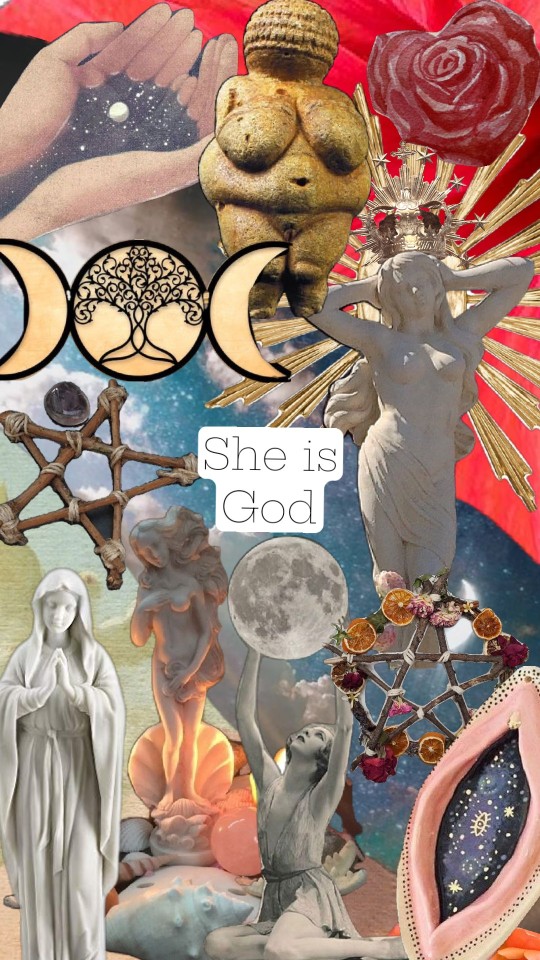
#goddess#filianism#deanism#mother god#divine feminine#feminist spirituality#female spirituality#god is a woman
142 notes
·
View notes
Text
“Some of the old goddess tales were twisted to suit the takeover of male powers, in order to win converts to their new gods. For example, Pandora (All-Gifts) was originally a Great Mother Goddess, whose box (womb, cauldron, cave, cup) was a reservoir of beauty and life-sustaining gifts. Patriarchal myth tells us that Her box contained all manner of destructive demons, which once unleashed upon the world, brought evil and suffering to all. Eve was also a Mother Goddess, whose tree was the Tree of Life. The serpent was her own sensual wisdom, and the apple was her sacred fruit. Athene, whom we are told was born fully grown out of the head of Zeus, dressed in armor and ready for war, was originally the daughter of the matriarchal goddess Metis. (Meter, method, measure, matter, mother…) Both mother and daughter were worshipped by the Amazons at Lake Triton, and were born parthenogenetically—without sperm.”
This quote was taken from the book, Ariadne’s Thread A Workbook of Goddess Magic by Shekhinah Mountainwater. The quote comes from the Myth-Making section of Cycle 1 on page 26.
Reading about the true origins of Pandora, Eve, and Athene (female mythical figures we’ve all heard about and seen in popular media) is cathartic. My heart is filled with joy!
#goddess spirituality#female spirituality#ariadne’s thread#dianic witchcraft#shekhinah mountainwater#feminist spirituality
397 notes
·
View notes
Text
The next witness was a woman from Utah who wanted to be among the witnesses because she had heard me speak both in Provo and Salt Lake. But she wished her identity to remain secret because she feared losing her job. Knowing just exactly the correctly humble and deferential tone to take with Mormon males, she was the perfect witness. I watched her in stunned amazement get those egos in the palm of her self-deprecatory little hand, and was grateful that she was willing to do what I could no longer do for any reason: play the male-female, master-servant game which so many Mormon men so much need for their egos, and without which they do not know how to relate to women at all.
The content of her statement was also unerring. She told them she taught young Mormon women in a special program for the intellectually gifted at a church-owned institution. Many of these young women, she said sadly, feel as if there is no place in the church for them, as if the church wants only women who are willing to sacrifice their talents and intellectual capabilities to full-time wife- and mother-hood, which they were not wiling to do, and that this made them unacceptable as "real women" in the church. "These young women are not dispensable," she cautioned.
"But," she continued, coming to the point, "for the past year and a half, I have been able to say to these troubled young women, 'If there's a place in the church for Sonia Johnson, there's a place for you.'" Here she paused for effect and got it. "Bishop Willis," she asked, "what am I going to say to them if you excommunicate Sonia?"
If she had stopped then, she would have left the prosecutor-judge very unsettled and impressed against his will. But sensing her advantage, she pressed it too far by pleading, "Please don't turn this into a witch-hunt!"
The conciliatory mood she had established in the room disappeared on the instant. Although I could sense that something had gone amiss, Rick had to explain to me later what it was. "She shouldn't have reminded those men of witches," he told me, and went on to explain. "Men are basically very much afraid of the spiritual powers of women; that's why they try to keep them from discovering them, from using and developing them—cut them off from the priesthood, set themselves up as women's spiritual leaders. When she said 'witch-hunt,' out of the slime of womanfear in their unconscious slithered the specter of women in power over men, and they instantly united against their age-old enemy, woman; woman as mysterious, woman as witch, woman as powerful, woman as god. I know," he concluded softly, "because I felt it in myself when she said that word, and I looked up quickly and saw what I was feeling pass simultaneously over the faces of the four men seated before us."
Even without the "witch-hunt" she could not have saved me, of course, but she might have left those who had set themselves up as my judges longer in nagging uncertainty about the wisdom of their verdict. Still, she was wonderful, and her act—for I hope it was an act—a grim reminder of all that lies ahead of women in establishing ourselves as adult human beings who do not need to fawn and grovel and coax and coo in order to be allowed to function in the world.
-Sonia Johnson, From Housewife to Heretic
121 notes
·
View notes
Text
Had an excellent discussion with an older woman about organizing and women's spaces today, she's such an inspiration to me 🥺
She ran into the TW problem about a decade ago and got around it by making her organization a church recognized by the IRS and named female-only worship as one of the tenets of the group, which I think is genius tbh. I know every group can't/won't want to do that, but 👀 filing that away for later
283 notes
·
View notes
Text
Looking for radical feminist texts and other downloadable PDFs of anything regarding female spirituality, or anything else that would be good in a library for Radical Women. I’ve started one on Facebook and will eventually post it somewhere more accessible. If you’re on Facebook and would like to join for the resources please lmk and any links to PDFs of this nature would be greatly appreciated.
#radical feminism#radfem#feminism#radicalfeminism#radical feminist#radical feminist books#radical feminist texts#witch#witchcraft#female spirituality#andrea dworkin#mary daly#andrea dworkin books#mary daly books#who cooked the last supper#when god was a woman
11 notes
·
View notes
Text
Ariadne's Thread: A Workbook on Goddess Magic ( Shekhinah Mountain Water).

Cycle 1: Questions to Ponder
To Kick off This Blog I've decided to Answer the questions within Cycle one:
First one is: What is a Witch?
If I am to look at the English word, it's derived from the Germanic word, Witch, as in Wise woman and essentially that is what a witch is to me, a Wise woman that knows herself intimately and therefore knows the world around her as she can be guided by her intuition.
The Word "Bruxa" is derived from the Word Bricta, Likely the root word that "Bridget" or " Brigid" was derived from and it means enchantment or magic or spell if you will. I see this word then relating Bruxa deeply with the Goddess, namely the Bruxa being a worker for The Goddess in all her forms.
The Witch/ Bruxa therefore becomes a symbol of Woman's myths and deep inner wisdom but also becomes a symbol of the wild untamed spirit of women that Patriarchy has repressed and demonized and her resurgence spells to me the beginning of the end of the Repression of Her and of her Daughters.
The second question that was posed by the book is whenever or not I see myself as a witch and short answer is: Yes. Long answer is that I see my ease with identifying with the term as me coming home after trying to squeeze myself so hard in patriarchal institution and thoughts; from being overly skeptical to trying to become a Christian girl; none fit like being a witch and a follower of my goddesses nearly as well and blends my love of Mythology, beauty, nature and reverence to The Female form that I did not find in overly ascetic religions and spirituality and in overly rigid atheism and In Phallocentric thinking.
Third question is what Makes a woman a witch?
I suppose in other times just a woman claiming to be a witch would be enough, but as both witch and women become shredded beyond compression as terms ( including males in the definition of women for example and regressive gender roles in New age spiritualities with a poor understanding of what constitutes as Divine Feminine), I suppose I am somewhat of a gatekeeper of a term. I suppose the closest people to embody the witch are those willing to help their fellow sisters when comes the need and that becoming one's Proper witch self comes with time, effort, trial and error and the general wisdom gained from the passage of time and deep immersion in the Self and Of The Goddess. I suppose it's why witches have been associated with Crones or the elderly woman in general; it may indicate that a Woman or Witch Woman is at her most powerful when aged or aging. I do think we all have innate magical qualities, some more developed then others and that a magical path is a girl and woman's best friend into developing such skills.
From the 4th question, I actually did grow up in a culture that suspected of the witch and saw her as a force of spite and evil even if many relied on witches to heal themselves. I've always been uncomfortable with this stories but am reclaiming this role for myself as even the negative connotations I feel strip the witch of her moral complexities I think. I'm sadden by those burned and killed to this day when accused of witchcraft, even if they weren't actually "witches" in the proper term; it does show that everyone is seemigly afraid of a woman's power and will burn her for it. I'm mixed on the idea of Goddess religion becoming even more mainstream and accepted, in a sense I have plenty to thank to many groups of outrageous women that helped pave the way for current Pagan thought, but I suppose I'm sadden how little traditions are 100% female focus or don't try to insert some heterocentric form of duality in it.
I elucidated my religious background further above, but yes I did go through a period of catechism thanks to my abusive mom but I was deeply uncomfortable by the idea of God and of a male God and was critical of male religion as the tool of social coercion that it was, winch my father tried to stir me into Atheism; but rather then fully indulging in that I became Agnostic for a bit until I decided to research into Wicca and had many of my thoughts and feelings affirmed by dozens of pieces of Pagan thought and never looked back. As I delved deeper into feminism and female spiritual thought, it has led to my goddess focused lean right now. Needless to say and to answer the 6th question my spiritual background has little to do with the Goddess and is actual opposite of it in many regards.
7th question asks me if I believe in a conscious being that can create life and the universe and how this being is; I like the idea of a Creatix instead of a Creator and see much of everything as tending to be female. Even many "male energies" I see as being Her all along. I suppose I believe in Passive energies and Active ones, Offensive vs Defensive, Kind Vs Harsh rather the n a strictly male-female polarity, male and female meant for each other way.
The 8th question asks how The concept of Goddess affects me; and needless to say I've always been enamored by Goddeses of Greek myth and much to no one's shock im a Greek hellenic devotee.
The final Question asks who or what is the Goddess; even if I believe in her as an actual creative energy, I feel we relate to her through powerful symbology to embody her power and to better worship her. We feel naturally attuned to Her and recognize her as a primordial mother that we as her daughters do things to please and she in turn helps us and our lives by giving guidance and meaning to.
And thus I'm closing off Cycle 1 of the book. Thanks for reading.

#goddess#dianic witchcraft#dianic wicca#witchcraft#the w in witch is for women#questions to ponder#Ariadne's thread#goddess movement#baby witch#feminist#feminist witch#paganblr#paganism#female spirituality
16 notes
·
View notes
Text
watching the show Growing Floret really has opened my eyes to the amount of people needed to pull off something big that impacts a lot of people. Anyway, if you want to build a separatist spiritual space that incorporates plants like cannabis and psilocybin to help women heal and find their wisdom, reach out. This is a big project I won't be able to do alone.
9 notes
·
View notes
Text
1 note
·
View note
Photo

Ascencion
Digital collage, Photoshop. 06.05.2022
Unsplash photo credits go to:
Photo by M.T ElGassier
Photo by I.am_nah
Photo by Christina Spiliotopoulou
#digital collage#tenet#noisy texture#riso#female spirituality#astral projection#heavens#as above so below#hands#blessing#black hair#crepuscular rays
3 notes
·
View notes
Text
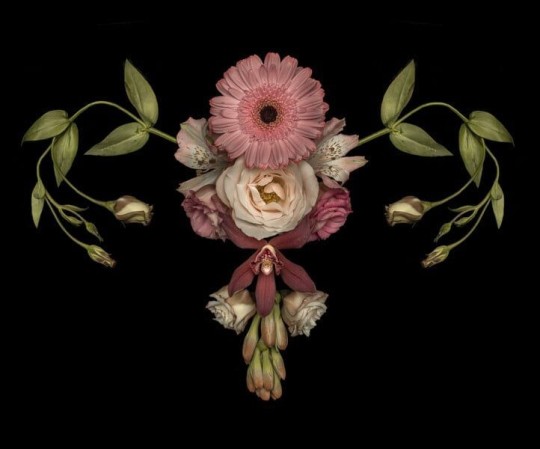

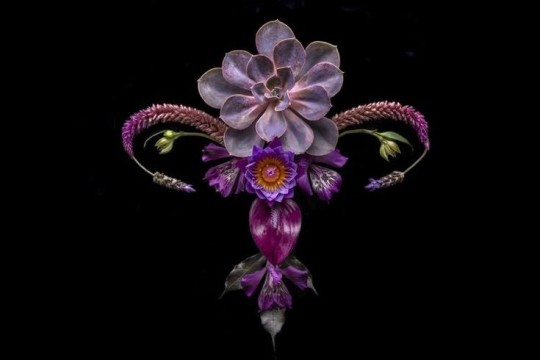


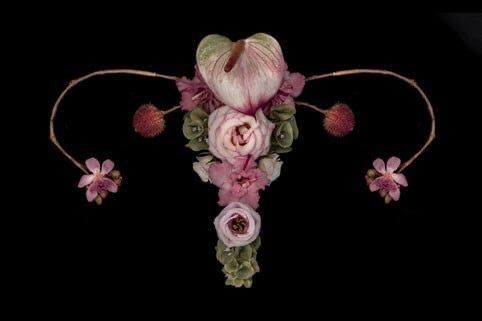
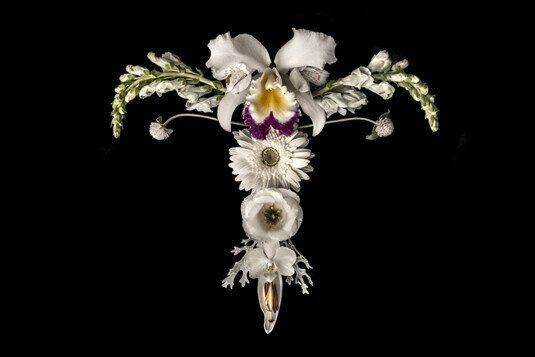
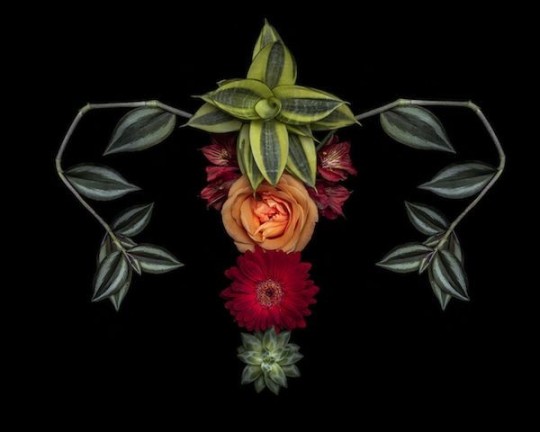
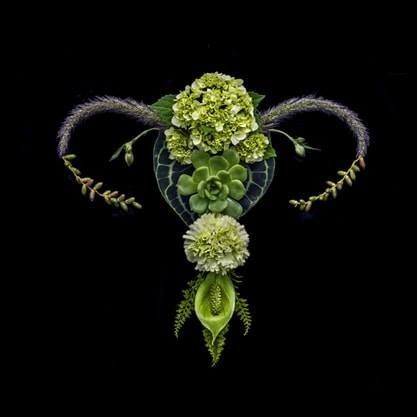
#goddess#filianism#deanism#mother god#divine feminine#female centered spirituality#feminism#female spirituality
23 notes
·
View notes
Text

I completed coloring this page from Shekhinah Mountainwater’s workbook, Ariadne’s Thread, a few days ago and wanted to share it here with y’all. Coloring Goddess images is a wonderful way to focus and meditate I’ve found! In Aradia’s book, I sketched in some Womanrunes that spoke to me from pages 220 and 221 of Ariadne’s Thread.
#female spirituality#ariadne’s thread#coloring page#aradia#womanrunes#goddess spirituality#dianic witchcraft#labrys
18 notes
·
View notes
Text
Women found temporary, often short-lived support for the notion of their innate equality with men as creatures of God in the heretical sects. Women in great numbers were active in organizing and proselytizing for the heretical sects and were visible among those suffering persecution and martyrdom. In this, they followed a pattern already noted in the history of early Christianity: as long as movements were small, loosely structured and persecuted, women were welcomed as members, given access to organizational leadership and shared authority with men. When the movement became successful, it became more tightly structured, more hierarchical and more male-dominated. Women were then relegated to auxiliary roles and to invisibility. This can be illustrated by the case of the Cathars.
The Cathar heresy flourished in the 11th century in the Languedoc and in the 12th century continued there and spread into Italy, the Rhineland and the Low Countries. Its dualistic belief system rested heavily on Gnostic texts and interpretations. Cathar doctrine taught that there were two distinct gods, one the creator of good, the other of evil. The material world was created by the evil god and its reproduction was by definition evil, hence Cathars rejected marriage and what they defined as the fruits of copulation, meat and milk. Since sin originated in Satan, Cathars held Eve blameless in the Fall; they saw her merely as Satan's tool. Following Gnostic doctrine, Cathars believed that Mary Magdalen had been the wife or concubine of Christ. They denied the doctrine of physical resurrection and held that resurrection referred purely to the soul. It was the evil god that created male and female; in the heavenly kingdom all creatures would be angels without earthly sexuality. These doctrinal differences from Catholic orthodoxy enabled Cathars to see men and women as more alike than different in the divine purpose and in their religious potential. Cathars believed that it was possible for human beings to come closer to perfection through ascetic living; those who succeeded were called perfecti; both men and women could reach that stage. In practice most people reached that stage only shortly before their death. While marriage was tolerated for the ordinary believer, it was forbidden to perfecti and perfectae. One reached that stage through the ceremony of the consolamentum, a sort of baptism by the laying on of hands. This meant that ordinary believers had a great deal of freedom in sexual matters during their lifetimes, since they were assured that after confession and receiving the consolamentum they would be perfected and saved. It is significant for the high status of women among the Cathars that, at least in theory, men and women could administer the consolamentum, although in practice few women ever did.
Catharism developed in the cities of the Languedoc, especially in Toulouse, the center of textile production and trade. Large numbers of women in the textile manufacturies became Cathars, as did male artisans and textile workers. Since the wages of female textile workers were much below those of male workers, even fully employed women could barely support themselves. To such women Catharism may have offered hope of salvation and practical communal support. The disproportionately large number of females among these heretics was noticed even by contemporaries.
A number of Languedoc noblewomen are known as leaders of Catharism and as perfectae. Phillipa, wife of the Count de Foix, led a convent of perfectae; one of the count's sisters was Esclarmonde de Foix, the "Princesse Cathare." After the death of her husband, she returned to the court of her brother, who built a house in which she, his former wife and other perfectae lived. In 1207 there was a public dispute between several bishops and representatives of Waldensians and Cathars. It is indicative both of her high status and of the limitations of her position that Esclarmonde participated in this public dispute on the side of the heretics and that the bishops reprimanded her and told her to go back to her spinning.
In the second half of the 12th century many Cathar women's convents were founded for unmarried daughters and widows of the lower nobility. These communities, led by perfectae, were under the spiritual guidance of a heretical bishop. While these Cathar women, like Catholic nuns, were active in education, spinning and weaving, they also proselytized and performed some religious ceremonies.
Constant persecution of the Cathars by the Inquisition made severe inroads in the strength of the movement. The violence of the Albigensian crusade of 1209 fell with particular brutality upon women. That year there was a massacre of heretic women and children in Beziers, and a year later, in Minerve, Cathars were given a choice of abjuring their belief or burning. One hundred forty male and female Cathars jumped into the flames. When crusaders started a reign of terror against the perfectae, the local population at times defended the heretics. In 1234 in several communities, armed women and other citizens prevented the arrest of female heretics. In 1243 women actively fought in defense of Montsegur castle, the last stronghold of the Cathars. During the siege almost all the noblewomen in the castle made a pact with the bishop to give them the consolamentum in case they were wounded and could not speak. The agreement was fulfilled when the situation in the fortress became hopeless. After the defeat, the military defenders of the fortress were allowed to retreat unharmed, but 200 male and female Cathars were burned on a great pyre, among them a number of well-known perfectae. After Montsegur the nobility largely withdrew from Catharism, and Cathar convents gradually disappeared.
By the end of the 13th century, Inquisition records no longer mention perfectae, which indicates that they lost their leadership position in the sect. In its declining phase Catharism attracted more adherents of the urban middle classes. Members of the middle class were drawn to Catharism because it allowed profit and interest, which the Church opposed. The Cathar women among this group appear in the record as among the faithful, but not as leaders. They supported the movement by raising funds, giving help to fugitives and doing missionary work. With the destruction of the Cathar convents the opportunity for women to exercise autonomous power and even political leadership disappeared. Many former perfectae joined the Beguines; others found refuge in Catholic convents. By the middle of the 14th century, Catharism had virtually disappeared. As would happen so often later in revolutionary and heretical movements, Catharism had seemed to promise women a role of spiritual and theological equality. Under the impact of persecution and of middle-class respectability this promise had given way to male dominance and patriarchal structures. The courage of the armed women defending their villages in the Languedoc against invading crusaders was only a singular outcry, throttled, and quickly forgotten.
-Gerda Lerner, The Creation of Feminist Consciousness
#gerda Lerner#female spirituality#female oppression#patriarchy#male violence#asceticism#catharism#women’s history#religious history#inquisition#heretical women
26 notes
·
View notes
Text
god is a mother
and with that
sentence
the world stops
the world always stops
when woman and
divine
commingle
as if the
feminine
dilutes the
miraculous
when in reality
it embodies it
when jesus turns water
to wine
they clap
but when women turn breasts
to milk
they cringe
a broken man’s body
is celebrated each sunday
while a broken woman’s body
is just hidden away
and it’s no wonder
that mother is a word
used by men
to demonize those
who don’t claim the name
and weaponized to shame
those who step out of line
because
their ideal
woman
plays the role of nurturer
and silencer
in pews
built and led by them
but
when god
becomes mother
she is neither quiet
or compliant
she leads confidently
she questions authority
she commands respect
which might be the problem
for mother god
did not gather us up
carelessly
but took her time with it
she fed us milk
birthed our souls
and broke her body
and the permanence
can be uncomfortable
and to disentangle god
from motherhood
is impossible
but
to disentangle god
from womanhood
is sinful
because seeing god as mother
is one step closer
to seeing god in me
and it’s in that
i am truly
born again
~ Kaitlin Hardy Shetler
Kaitlin Shetler Poetry
www.skeptileptic.blogspot.com/p/poems-for-resistance.html
0 notes
Text
Things women should never feel ashamed of:
• Orgasms
• Receiving money
• Receiving compliments
• Pretty privilege
• Being smart
• Dressing up
• Menstrual cycles
• Emotions and being sensitive
• Expressing our sexuality
• Resting and relaxation
• Asserting our sexual needs
• Maintaining our standards
• Saying No
• Wanting or having children
• Choosing to be childfree
• Our body count
• Our nude body
• Wearing makeup or not wearing makeup
• Having boundaries and protecting ourselves
• Our spiritual practices
• Using witchcraft
• Being ambitious
• Going to college
• Being a housewife or stay at home mom
• Loving who and what we love
#succulentsiren#postive affirmations#dark feminine energy#writers and poets#divine feminine#it girl#femininity#dark femininity#affirmations#dark femme#femme fatale#high value#high value men#high value woman#positive mindset#high mindset#self confidence#manifest#witchcraft#spirituality#emotions#sensitive#woman#women#female#femme#standards#pretty privilege#speak your truth#speak
7K notes
·
View notes
Text
What She [Wraine] led me to understand about the true story of the Virgin Mary, Joseph and the Immaculate Conception of Jesus Christ.
A) Joseph and Mary made love
B) Mary had two ovum inside her uterus
Bii) First ovum was inseminated by Joseph the Father of Jesus Christ {this being a January ovum} {December ovum was not flushed out during menstrual cycle in the prior month}
Biii) Jesus swum in to January ovum first and receives first spark from his creator, Mary. {This spark ultimately comes from God, the God of all things}
Biiii) The ovum gets its outer layer hardened, yet Jesus with the initial January spark and against all likelihood of survival swims out of January ovum; without the Father, Joseph. Jesus on his own swims to December ovum successfully making the impossible possible.
C) Jesus receives second spark from Mary for the December ovum {without the inclusivity of Joseph the Father propelling him there} [yet Jesus makes it to the December ovum on God's command]
D) In the Holy Bible it is said that Mary is a virgin and that she gave birth to Jesus without a father, only half of the original story made it to scripture. Mary gave birth to Jesus in a Immaculate Conception is half-the-way true. ONLY HALF THE STORY WAS TOLD: FROM THE SWIM OF JESUS; FROM THE JANUARY OVUM, TO THE DECEMBER OVUM.
Ala

#jesus#ancient wisdom#male spirituality#male spirit#female spirituality#light#love#life#surroundings#liberty#lost#christendom#christianity#islam#ovum#ovulation#ovulated#spirit guide
0 notes
Text
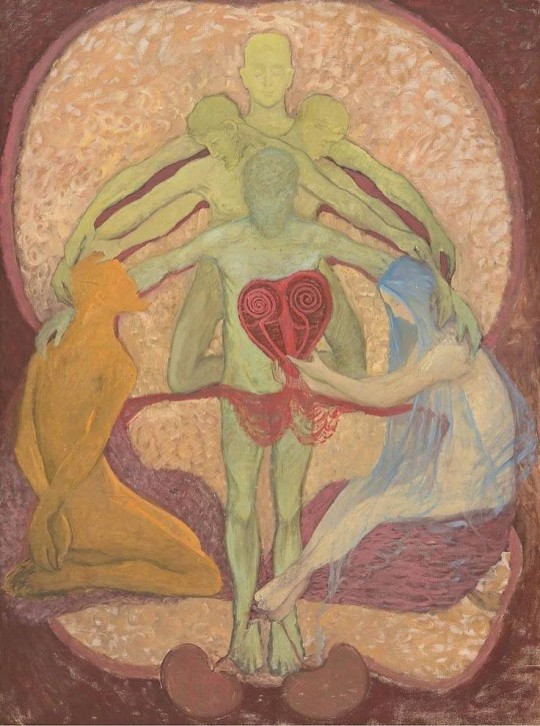
The Rose, Nr4, by Hilma af Klint, 1907.
#hilma af klint#female artists#the rose#symbolism#art#painting#spiritualism#heart#transcedence#abstract art#mysticism#theosophy
3K notes
·
View notes